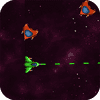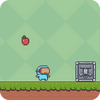Super Mario Bros. computer game signature tune honored by Library of Congress (NPR Interview)
By Winifred Phillips | Contact|Follow
I’m so glad you could join us! The Sounds Of America radio programme dedicates an episode to each of the recordings selected for conservation that year. Every year, the Library of Congress adds a list of notable recordings to the National Recording Registry. Recently, I was interviewed for an episode of National Public Radio’s The Sounds Of America radio series in order to provide some background information and musical context for one of the most recent additions to the National Recording Registry—the well-known Super Mario Bros. computer game style! For fans of video game music and game authors, this is fantastic news. The Super Mario Bros.-inspired music is currently the first video game music composition preserved for posterity in the Library of Congress’ National Recording Registry. Twenty five recordings are chosen by the National Recording Registry each year to highlight “the richness of the country’s audio tradition.” The National Recording Registry’s staff of experts in preservation work to guarantee “the long-lasting conservation of that tradition for future generations.”
I was able to discuss the historical relevance of the Super Mario Bros. style music as an influential work in the field of video game music structure since I wrote the book A Composer’s Guide to Game Music. The nature of computer game music was the subject of a lecture I had given at the Library of Congress in the past, which was tape-recorded and preserved in the Library’s Films & Videos Collection. This experience gave me a deeper understanding of the importance of the conservation work done by the Library of Congress. I could also discuss the Super Mario Bros.-inspired music from the perspective of a musician who has recorded one of the many cover versions of this well-known song. My rendition was tape-recorded for the tribute album “Best of the Best: A Tribute to Game Music.” I had a unique perspective on this historically significant musical structure as a result of all of this, and I felt privileged to share it with The Sounds Of America radio programme during our interview. The programme also included interviews with Charles Martinet, the star of Super Mario Bros., Jeff Ryan, and Koji Kondo, the creator of the Super Mario Bros. video game, in addition to myself. The entire programme is available to listen to here.
I reasoned that publishing the details of my entire interview in this post could be helpful. The album also has my own cover version of the song, which you can find in the section discussing the popularity of cover versions. Let’s first listen to the original Super Mario Bros. Style before diving into the music!
Sounds Of America: First if we could to begin, could you present yourself with your name and profession?
Winifred Phillips: Sure. I’m Winifred Phillips, a video game author best known for creating the soundtracks for six of the most important series in video games: God of War, Assassin’s Creed, Total War, LittleBigPlanet, Lineage, and The Sims. A Composer’s Guide to Game Music, published by the MIT Press, was also written by me.

Sounds Of America: Great, and today we’re going to be talking a bit about the Super Mario Bros. Style. Do you keep in mind when you initially came across ball game to Super Mario Bros?
Winifred Phillips: The Super Mario Bros. aesthetic first caught my attention when I was very young. Like a lot of kids who were avid players, I played Super Mario Bros. in its original setting. I was there to support Mario when he saved the princess! It was a lot of fun to experience it that way. Super Mario Bros.’ music is unique in that it actually complements the game’s gameplay. Because it is so complementing, it is unforgettable. That was one of the things that really resonated with me as a child and inspired me as I got older and started to think I might be able to write video games.
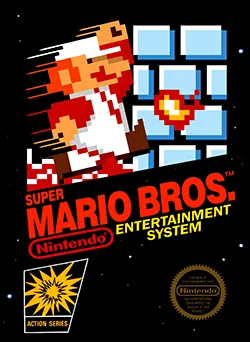
Sounds Of America: What do you keep in mind made it attracting you?
Winifred Phillips: The video game Super Mario Bros. was genuinely avant-garde for its time. It was extremely well-built, colourful, and vibrant. It was a really fun experience! It was incredibly dynamic, wonderful, and challenging, and the music itself was magnificent in enhancing the experience. The music in Super Mario Bros. is particularly intriguing because it enhances the dynamics of the video game and blends so nicely with gameplay. There are specific moments during gaming where the music syncs with the game’s dynamics and the game itself pulses in time to the music. I find that to be incredibly intriguing as a writer. It was fascinating to me as a child because I enjoyed music! I was so impressed by the video game’s actions that I didn’t even notice how the gameplay mechanics enhanced and highlighted the music. That was amazing, it genuinely felt different to me.
Sounds Of America: Could you inform us what you learn about Koji Kondo and how was he related to on the planet of computer game composing?

Winifred Phillips: Koji Kondo is, in fact, a titan in the world of video game creators. He is essentially the first experienced video game author. Before him, authors did not devote their entire careers to writing music for video games. He was essentially the first author to do that, and since he spent his whole professional career working for Nintendo, there was a close bond between the two parties. He actually had an innate understanding of how music and sound design in a video game improve one another because he was both a writer and a sound designer. He applied this to the way his musical structure and sound style were integrated. The music and sound effects in the video game Super Mario Bros may be studied in great detail, and that game had a significant impact on how sound professionals evaluated the importance of music and sound effects in video games going forward.
Sounds of America: How would you describe the Super Mario Bros. style to someone who has never heard it?
Winifred Phillips: The music in the Super Mario Bros. style is really intriguing. It has a style that is somewhat syncopated. a lot of jumps in time! It exudes a powerful sensation of uplift. Very vivacious and energising music! It’s also noteworthy since the musical structure is one you could associate with the Baroque era. The idea of polyphony serving as a fundamental motivating factor in musical construction. When it came to choosing how to create his music, Koji Kondo only had to contend with three voices. He would start with a bassline, add two more lines for consistency, and then add a line for a sound generator he would use to create percussion. This was a somewhat constrained noise mixture to create music with. The fact that the artist was able to create such a vibrant rating using such basic materials is a testament to his creativity and resourcefulness.

Sounds Of America: And how is this an example of video game music that is melodic in nature?
Winifred Phillips: The musical quality of video games is superior to the way we listen to other types of home entertainment. Games are lengthy activities. We might spend quite a bit of time playing video games when we sit down to play them. The soundtrack of a video game becomes completely acquainted to us because it always goes along with our experiences. Since the aesthetic is used frequently in video games like Super Mario Bros., it should be welcomed when it is repeated. It must be set up in a way that is infectious, like an earworm. It sticks in our thoughts, follows us about, and keeps us entertained for a very long time. That’s a very difficult thing for a video game author to handle, so it’s really fantastic how well the Super Mario Bros. approach works. It is extremely intricate and intriguingly balanced. It features a lot of humorous and inspiring harmonic relationships and phases. All of this combines to give you a positive and stimulating feeling, and it also helps you stay focused on the game’s objectives. All of this is excellent and really effective, which is extraordinary for a video game author to learn and understand.
America’s Sounds: I want to expand a little bit on gameplay. What are a few ways that music enhances a player’s gaming experience?
Winifred Phillips: A genuinely fascinating connection exists between music and the intellect. It has an impact on how we interpret events. Our perception of time—how quickly or slowly it moves—can be impacted. It may help us focus on the important facts that we need to know in order to succeed. It can help us, give us a feeling of our objectives, and help us assess the relative importance of different elements of our surroundings. Music has a powerful impact. Furthermore, music becomes more directly associated with memory for us when it is experienced when we are engaged in an activity. It turns out to be a really good mnemonic. More than virtually any other experience we have as humans, music has the capacity to bring an experience back to life. Fans, in my opinion, swarm to those travelling video game music concerts for this reason. When they hear their favourite styles, the admirers, who occasionally wear attire, cheer enthusiastically. These songs bring back memories, and players appreciate those experiences. The relationship between the performer and the music that underpins their performance is one of a powerful, personal, and wondrous kind.
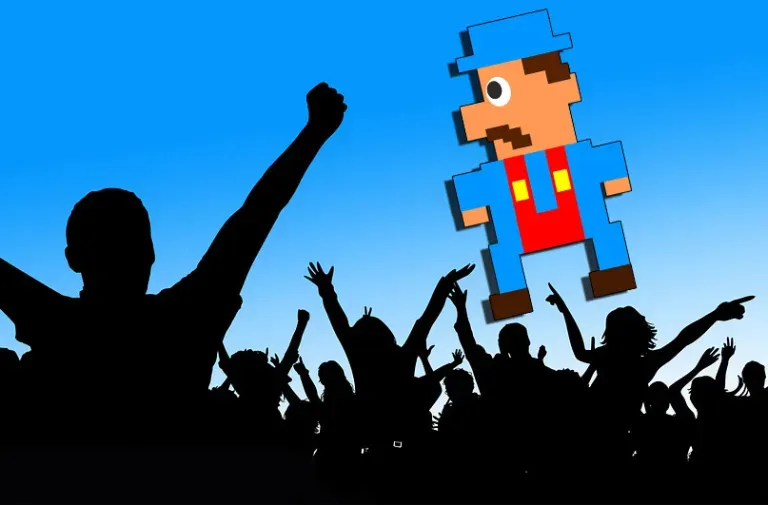
Sounds of America: How does music contribute to the creation of the Super Mario Bros. video game’s setting? How do you think music helps with that because it’s fairly unusual and has eccentric characters?
Winifred Phillips: The Overworld style from Super Mario Bros. as well as the Super Mario Bros. soundtrack in general have an incredibly dazzling, dynamic quality—primaries! It incites a spirit of vigour and hope. It serves a purpose. It moves with a clear sense of momentum. For the type of video game that Super Mario Bros. is, there is a tonne of balanced drive, which is quite helpful. Continuous movement and steady momentum are present. As you follow your approach, there are tasks and goals that you must complete. Really makes a difference when the music helps you concentrate on the video game’s momentum. Koji Kondo was interviewed about how while he was creating the video game’s sound design, he was requested to generate noises for the leaping and he questioned, “Why would I have a noise for leaping? It also complements all of the crazy characters and all of the fun experiences.” It is silent. The idea was that everything has to be done in a quirky manner. Anything that needed to be gestured towards from the audio world. Which was incredibly intriguing as a novel way to approach video game audio because it essentially functioned as a parallel language that matched gameplay and gestured to all of the different behaviours you were seeing on screen. That was in fact trustworthy.
Sounds of America: The magnificent blue sky also significantly impresses Mr. Kondo. Additionally, he made an effort to compose music appropriate for each scenario, such as Mario’s underwater levels. How might this affect someone who plays video games?
Winifred Phillips: The choices that were made from level to level and from place to location are actually quite fascinating. Rhythm and metre were incredibly important in the music of Super Mario Bros. For instance, the music switches to a beautiful waltz pace when Mario is swimming underwater. When asked about it, Koji Kondo said that the waltz was intended to convey the dance-like quality of Mario’s mobility throughout that level. It’s really interesting how the level’s visuals emphasise the waltz-time as well by pulsing and flashing in sync with the music. The decision to really accentuate the music in this manner was a superb one taken by the development team. The video game Super Mario Bros. is characterised by that kind of mentality. The experience was heavily reliant on music, which I think contributes to the video game’s infectious nature. It was driven by a catchy musical undercurrent. As a result, it is a tremendously fascinating video game to research.
Can you discuss a little about the noise’s texture in relation to the Super Mario Bros. Theme’s initial instrumentation for Sounds of America?
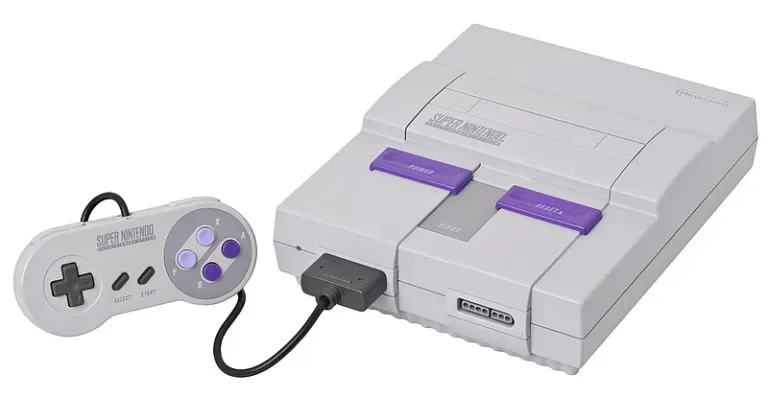
Winifred Phillips: At the time, the Nintendo Entertainment System’s invention only supported three noise channels and square waves. To be able to create a satisfying musical rating, you had to concentrate on balanced and melodic resourcefulness. Because you really didn’t have that many options, it wasn’t as if you could add depth and nuance by the way that different noises’ tones interacted with one another. You had the sound generator and those three voices to give you a feeling of rhythm. The balanced drive of what was performed in Super Mario Bros. was highly syncopated, which made it engaging and influenced by a more contemporary perspective. The video game has a really fantastic beat that makes you nod your head along while playing. Additionally, the polyphony of the various parts and how they interacted with one another was quite impressive. The fact that the music and sound design have to coexist in the same space is one of the game’s soundtrack’s most intriguing aspects. Voices would be removed from the music if sound style components were on. And the music needed to be constructed so that it would still feel satisfying even if the voices were drowned out by a swarm of sound effects. It wouldn’t appear as though it had lost anything at all. It’s a really interesting way to approach what is essentially a system of correlations between the criteria of the sound style and those of the music.
America’s Sounds: Additionally, this song has been rerecorded, reinterpreted, and covered by musicians like you. Why do you think the track can be applied to different designs so well?
Winifred Phillips: Super Mario Bros.’ Overworld Theme is satisfying, upbeat, and lively, but it’s also a touch hazy when seen in the context of the provided sound scheme. Numerous cues, as well as the way sounds interact with one another, can provide us with information about a musical genre. Since the 8-bit noise combination in the video game is so constrained, these signals are not present. I think it made it possible for people who were listening to this music to interpret its genre in terms of what they enjoyed most. Some people could perceive it as a more contemporary piece after hearing it. And some people could classify it more as jazz or ragtime. Many jazz influences, according to Koji Kondo, pushed the music forward for him. While some listeners might hear it that way, others might not because the essential elements of jazz were missing. You might use that method of analysis if that’s what you prefer most. I think that’s a big part of why it can be so much fun for writers and artists to reimagine the Super Mario Bros. aesthetic with different instruments. We get to examine it in the way that we imagined it when we first heard it. The kind of crucial textures we can offer it can place the style into a category where it might have previously been less certain (in terms of what category it was claiming by itself).
America’s Sounds: And tell me a little bit about your variant and what you might have discovered.
Winifred Phillips: I’ve had a lot of experience learning video game music. I’ve been a computer game author for a very long time. And I’ve made it a priority in my professional life to research and understand what makes video game music so incredible. What makes video game music pleasurable, dependable, and distinctive is a topic that I was particularly interested in researching for my book, A Composer’s Guide to Game Music from the MIT Press. I suppose I was inspired to create a cover of the Super Mario Bros. soundtrack in order to be able to share what I found interesting about it and to also honour the music in terms of its importance to the body of work that constitutes video game music as a whole.
.webp?width=828&quality=80&format=webply&disable=upscale)
Winifred Phillips: (cont.) Computer game music is a relatively new form of art. Video game music is a very new art form compared to previous types like movie music, television music, and obviously symphony music and music. Our past is not particularly lengthy. Having a master or a critical work is important to all of us who pursue that form of art. We can celebrate our contributions as video game designers and artists and also unite as a community by performing it and adding our own touch to it. I think that’s one of the reasons there are so many different ways to cover the Super Mario Bros. Overworld aesthetic. We all share it as a goal and inspiration for our job, but each person has their own distinct drive, in my opinion.
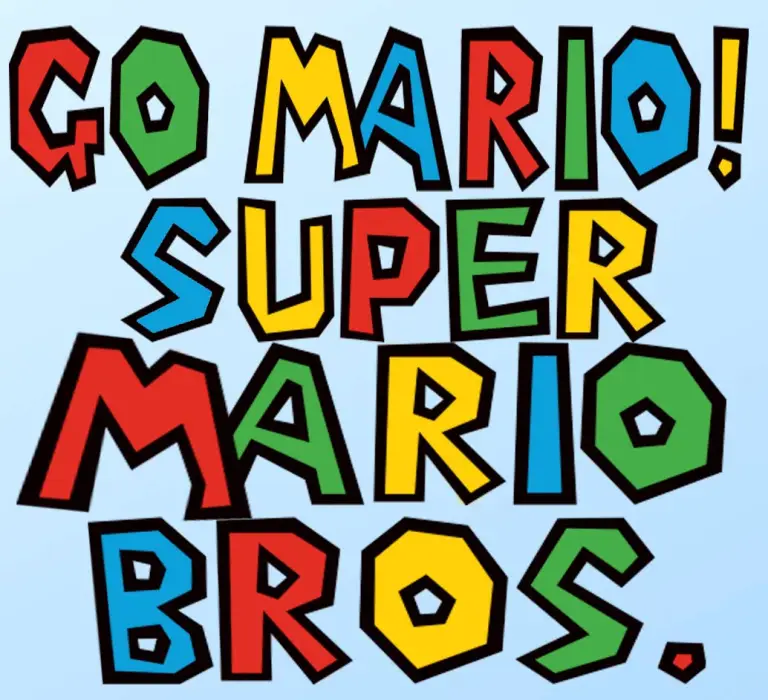
Sounds Of America: And when you were setting about playing it, what was your objective?
Winifred Phillips: The first Super Mario Bros. has a fantastic syncopated quality that I find really inspiring. Now, I think other people have gone in a very different direction when they’ve created cover versions of Super Mario Bros. Some people might find it to be quite relaxing and start to groove to more of the Latin rhythms, which Koji Kondo has said were a major inspiration for the building process. When I listened to it, it actually reminded me more of ragtime jazz. Because of the syncopated rhythms and the way the bassline moved, it really made me think of ragtime, which was quite delightful, so it spoke to me on that level. Naturally, at the time, people knew me for both my work as an orchestral composer and my work as a vocalist. I was also intrigued by the idea of creating a singing version of Super Mario Bros., which would essentially be a scat version in which I would use my voice to carry out the original plan’s limited polyphony. In essence, I provided what the Super Mario Bros. style was striving to reveal with my voice, which was a minimal noise combo. That was fun to watch! I think all I wanted to do with Super Mario Bros. was evoke a festive mood. The idea of gathering and playing Super Mario Bros. together and enjoying each other’s company is not just such a shared experience for players as a whole, it’s also an essential piece of music for video game authors and artists. Simply said, that is the essence of what it means to be a player. It was really satisfying for me to create a cover version of Super Mario Bros. that also felt like a milestone in the history of early video games. It was something I genuinely desired to do (hear it here).
Go Mario! (Super Mario Bros.)
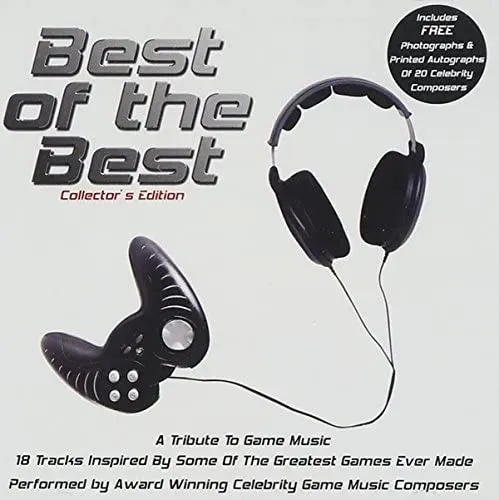
Sounds of America: How do you think Nintendo will be represented by the Super Mario Bros. style?
Winifred Phillips: Nintendo has a very good brand reputation. I’ve had the good fortune to write music for a few video games that were released on the Nintendo platform. And I am aware that when creating music for a Nintendo video game, such as the work I did on Spore Hero, SimAnimals, and Speed Racer, the industry’s acceptance of home video gaming, which is at the core of what it means to grow in the Nintendo universe, is what drives those employment. According to Nintendo, playing video games should always take place in a friendly setting that allows everyone to participate. This setting should be diverse, encouraging, lively, and easygoing. The Nintendo brand name greatly depends on each of these things. The Super Mario Bros. Overworld Theme, in my opinion, did a fantastic job of evoking the optimism, hope, inclusion, and brightness that lie at the core of everything Nintendo stands for.

Sounds of America: Correct, and what do you think the psychological effect of the Super Mario Bros. style has to do with it? What sets it apart?
Winifred Phillips: One of the greatest video game soundtracks ever created is the style music for Super Mario Bros. If you hum just a few notes to practically any musician, they will instantly comprehend what you are saying. As a neighbourhood developer, that is incredibly powerful for people to share that link. I think it’s partly because of how that tune permeated the entire game and how Nintendo teams were focused on preserving and carrying over that tune into other games in the franchise, letting it progress through time and continue to enthral players in Mario video games, from that day to this. We’ve all had encounters with that aesthetic, and I think that’s a big reason why it’s so important to the video game industry. We all find it enjoyable for different reasons. I think that contributes to its distinctiveness.
Sounds of America: This Super Mario Bros.-inspired recording will now be safeguarded in the National Recording Registry, based on public voting and ultimately Library of Congress selection. In any format, they will be equalised and kept in their original state because they will be protected forever. Why do you think it’s important to keep this up? It’s also the first music from a video game that has been added to the computer registry. Why do you think it’s important to keep this music in this way?
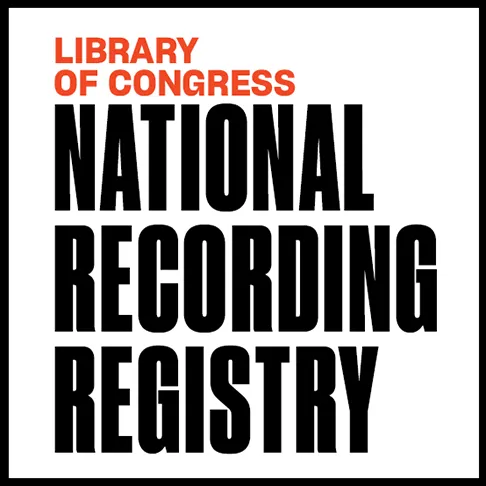
Winifred Phillips: A significant step for the video game music community is having this music maintained at the Library of Congress. We’ve all believed that the music from video games has the potential to be a form of art in which creators can express themselves and form meaningful connections with listeners. The fact that this music is now officially recognised by the Library of Congress adds a lot of significance to the work that we do for a living. It’s a statement of the value of this music to our society. Which suggests that creators of video games contribute to the culture of our nation as a whole. As creators of video games, it means a lot to us. It was very noteworthy to me that I had the opportunity to illustrate why video game music has relevance to the entire subject of music structure when I had the opportunity to speak before the Library of Congress during an event honouring computer game music.
America’s Sounds: It was previously brought out by you how, which is interesting to consider, video game music can persist for a very long time. You are not allowed to play your favourite album for 5 hours straight, but you are allowed to play a computer game for that amount of time. Can you talk about that? And how does the song sound after that amount of time?

Winifred Phillips: Really, the Overworld Theme is not that long. It lasts for roughly 80 seconds, which is astonishing to think about. When you take into account how frequently you hear that music while playing the video game. It incorporates a variety of characteristics and factors to take into account in order to generate a tune that can repeat for that long and yet be lovingly remembered. This persisted throughout the early days of video gaming for anything. This persisted through 1985, the 1980s. Additionally, musicians had a little bit more patience back then when it came to repeating musical themes. They would love the Super Mario Bros. type repetition as a fun feature of the video game they were playing. Similar to how the Super Mario Bros. style is now, it might be more difficult to accurately reproduce a style in a video game nowadays and hope that the video gaming community will embrace it. The style is no longer imitated as frequently in the Super Mario Bros. franchise games as it was in the first Super Mario Bros. video game. In reality, the music in video games has evolved and adapted to the times. They are able to adapt to gaming because they have handled brand-new advancements. With regard to how it can react to the player’s choices and provide them a sense of security, video game music has become far more complex and intriguing. When it comes to creating this kind of art, the process for video game music is far more dynamic and complex. For everyone of us, the idea of developing a crucial theme is still very important. The idea that we can create a concise, succinct, outstanding song that people would still embrace and love years later is not only the pinnacle of branding and identification, but also of structure. For that reason, we all admire the Super Mario Bros. style.

Conclusion
I hope you’ve enjoyed these recordings of my radio interview with The Sounds Of America programme and that you share my excitement on the Super Mario Bros. style’s induction into the National Recording Registry. It’s a significant development for the world of video game soundtrack composition!
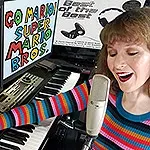
Author of computer games Winifred Phillips has been nominated for a BAFTA. Her most recent video game project, Jurassic World Primal Ops, featured music she composed that won the Global Music Award, the NYX Award, the Society of Composers & & Lyricists Award for Outstanding Score for Interactive Media, and the Game Audio Network Guild Award for Music of the Year. Sackboy: A Big Adventure, a popular PlayStation 5 launch title (with an available soundtrack album), is among the most recent titles. The Assassin’s Creed Symphony World Tour’s initial collection featured songs from Phillips’ critically acclaimed Assassin’s Creed Liberation rating, which made its Paris debut with an 80-piece orchestra and choir. As a skilled computer game author, Phillips is most known for creating the music for some of the most well-known video game brands, including Assassin’s Creed, God of War, Total War, The Sims, and Sackboy/LittleBigPlanet.The Academy of Interactive Arts and Sciences’ Interactive Achievement Award/D.I.C.E Award, the Game Audio Network Guild’s 6 Awards (including Music of the Year), and the Hollywood Music in Media Awards are just a few of the accolades Phillips has received. The MIT Press published her critically praised best-seller A COMPOSER’S GUIDE TO GAME MUSIC. Winifred Phillips has given talks at the Library of Congress in Washington, DC, the Society of Composers and Lyricists, the Game Developers Conference, the Audio Engineering Society, and many other venues as one of the foremost experts on music for interactive home entertainment. During a Reddit Ask-Me-Anything session that went viral, made the first page of Reddit, received 14.9 thousand upvotes, and became one of the most well-liked video game AMAs ever hosted on Reddit, Phillips’ fervent fans flooded her with worries. The Routledge book Women’s Music for the Screen: Diverse Narratives in Sound, which compiles the opinions of the most renowned female authors in film, television, and video games, includes an interview with her. Follow her on Facebook, Instagram, and Twitter.



















